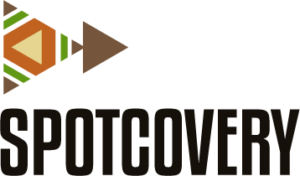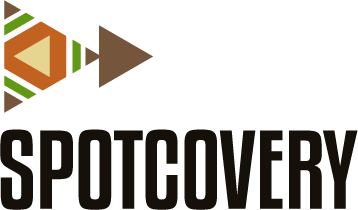Vegetable garden planning apps are helpful tools to plan and design your garden. Some of these apps can even follow weather patterns in your area to give you an exclusive perspective.
If you love gardening but find it overwhelming to manage all the advice, try one of these best gardening apps.
Become an insider. Subscribe to our newsletter for more top trending stories like this!
While you can get lost in the world of vegetable gardening planning apps, there are a few worth downloading. Besides learning about vegetable gardening online, you’ll be updated on weather forecasts and rainfall amounts expected.
5 Vegetable Garden Planning Apps You Need
Vegetable gardening can be fun and an excellent way to save money and eat better. These vegetable garden planning apps offer gardeners plenty of growing advice, plant care, inspiration, and how-to advice.
- GrowVeg
GrowVeg is a vegetable garden planning app with a substantial market in the U.S. and Canada. It provides the best times to plant, the average first and last frost dates, and the correct spacing and planting dates. It also provides companion plants for each type of vegetable, succession plantings for later in the season, and plots out drip irrigation lines.
The app is also designed to send monthly reminders to you twice via email about what crops to sow and plant from your plans. For a well-organized and timely planted garden, this app is well worth the annual subscription fee.
The good news is, GrowVeg is available for your smartphone and tablet. You can use it on Android and iOS.
Pros
Best for beginner gardeners
Find companion plants
Determines the best time to plant
Suitable for your smartphone and tablet.
Send monthly reminders to you twice via email
Finds the average first and last frost dates for your area
Provides correct spacing and recommended planting dates
Cons
None
- Veggie Garden Planner
You can rapidly design your vegetable garden patch with the help of the Vegetable Garden Planner, which offers you the information you need in a neatly organized way.
The software offers a free download so you can evaluate the value it offers before making a purchase.
You can select vegetables that go nicely together, thanks to it. For each vegetable, information on excellent and harmful neighboring plants is available.
You will receive tabular summaries of the vegetables in your selected garden composition. As a result, you will be able to easily identify the dates for sowing and harvesting as well as the interactions between vegetables.
Pros
Offers a free download on Google Play
Design your vegetable garden
Options to select a family of veggies
Cons
Has a small list of veggies to choose from
You have to pay for different aspects of the app
You can only create your garden in a perfect square
- VegPlotter
VegPlotter is one of the top apps for planning vegetable gardens that you can use. It’s a fantastic garden planner since it has a very robust garden planning program that lets you adjust your units of measurement.
You can test it out for free for 7 days, just like other gardening apps, and after that, annual plans start at a relatively affordable $17. When you sign up, it asks for your location and the date so it can suggest which fruits, veggies, or herbs to plant when the time is right in your area.
The user-friendly interface of VegPlotter helps you build your garden to scale. The user interface makes it much simpler for students to plan their food gardens in the classroom. You can build square-foot gardening beds, flat or raised beds in irregular, uneven, or round shapes.
As soon as you’ve determined the best arrangement for your garden beds, VegPlotter offers a robust database of fruits, vegetables, and herbs. Growing instructions are also included for each plant. Using the information on your variety’s seed packet, you can modify each plant’s planting distances and harvest times.
Pros
Sends reminders
Works on mobile and tablets
Suitable for schoolchildren to use.
Has a year’s worth of the gardening plan
allows you to change your units of measurement
Cons
None
- Garden Manager
One of the best apps for designing vegetable gardens is Garden Manager, which you’ll love. You may manage your harvesting dates and crops with the aid of this program, which is relatively new. It’s incredibly user-friendly because a virtual gardening coach talks you through using the program when you first open it.
There are three different subscription packages available, all at reasonable prices. The app connects to your nearby weather station to provide you with updates on the situation as needed. Many users value the app’s simplicity.
Pros
Tied to your local weather
Become an insider. Subscribe to our newsletter for more top trending stories like this!
Manage your harvest dates
Contains a virtual gardening coach
Cons
None
Join our Spotcovery Global Black Community Facebook Group for early access to exclusive content and share in a lively discussion.
- The Kitchen Garden Planner
With the Kitchen Garden Planner, you have two options: selecting a pre-planned garden or creating your own garden plan.
If you’re a newbie, a pre-made garden plan can really make planning and planting your first garden very easy. Even seasoned gardeners will vouch for the originality and inspiration of the pre-made design. One of this vegetable garden planning app’s best features is the pre-made bed templates.
You just enter the size of your garden beds into the Kitchen Garden Planner and then drag and drop the plants you want to grow into the grid. You’ll find planting instructions for each of the plants you’ve chosen beneath the plan. Or, you may peruse the rest of the website for a ton of excellent tips on organic gardening while you neatly save your plan and print it off.
This planner, unlike GrowVeg, cannot predict when it will frost to inform you when to sow or schedule successive crops throughout the year. Also, it doesn’t email you reminders or create lists to help you stay on target. Everything else must be figured out by you.
Yet, the Kitchen Garden Planner is a truly great, excellent, and user-friendly program for a free planner.
Pros
Easy to use
Free app
Has a pre-designed plan
Has planting guidelines
Cons
Does not calculate frost dates
Does not contain a year plan
And here’s a bonus to add to your vegetable garden planning apps:
People Also Read: 10 Black Female UX Designers You Should Follow
- SmartGardener
SmartGardener is a community on its own, where you can find over 3,000 varieties of seeds and a little library of gardening tips, including videos. What’s more? It has a forum!
It has robust tools that allow you to use the app for $10 per season or $30 per year.
SmartGardener determines your planting zone and offers recommendations for what and when to plant. This is after you enter your location and respond to a few questions. Then, for your convenience, SmartGardener may email you a list of gardening responsibilities. This list includes the most appropriate times to plant and harvest each type of plant you decide to grow in your garden.
The planner itself is quite user-friendly and allows you to customize the size of the square-foot grid. It provides you with a selection of garden bed sizes and forms that you may change in square-foot increments to meet your plot. You may share your garden plans with other members of the Smart Gardener community. The designs are straightforward and beautiful.
You will then need to select and arrange your specific plant varieties from their database.
With crop placement and size adjustments, this vegetable garden planning app takes you from concept to harvest. You can use the to-do list to be reminded of when to water, weed, sow, and, if necessary, harvest your plants. The app’s journal and photo sections are well-liked by users.
Pros
Emails garden tasks weekly
Calculates your planting zone
You can size your garden any way you want
Cons
Not suitable for mobile view
Have info only on vendor seeds
Frequently Asked Questions
Q: What is vegetable garden planning software for Mac?
A: Garden Planner is a simple-to-use tool for designing gardens and landscaping. With a simple “drag and drop” interface, arrange plants, trees, buildings, and other items. Create trails, fences, and pavement rapidly by using tools. Make a printout or a high-resolution color image of your design next.
Q: Is there an app where you grow a garden?
A: GrowVeg is an app that helps you plan and manage your vegetable garden. You can track your plants, add locations, and it will send you reminders. It also provides companion plants for each type of vegetable, succession plantings for later in the season, and plots out drip irrigation lines.
People Also Read: 12 Black Leaders in Tech You Should Know
Q: What is a good size for a garden plot?
In general, 200 square feet of garden space per person will enable a harvest that nourishes everyone throughout the year. Plan an 800-square-foot garden for a typical household of four; a 20 by 40-foot plot should be adequate. Scale up or down as necessary, depending on how big or little your family is.
Q: What is the best garden row size?
A: Rows should be at least 36 inches wide for the majority of tillers. In this manner, until the crop begins to fill in between the rows, you can return between the rows and lightly cultivate to control weeds. 36 inches between rows would be the bare minimum for most crops, including beans, corn, tomatoes, eggplant, peppers, okra, peas, and squash.
Nearly 80% of consumers visit directories with reviews to find a local business. List your business for free in our exclusive Spotcovery Black-Owned Business Directory.
Become an insider. Subscribe to our newsletter for more top trending stories like this!




